How To Use Your Homegrown Veg
This is a different post to my normal repertoire of camping tips and walks, however I thought it would be good to try something different. Plus, gardening is a great way to spend time outside all year round.
I have to say I’m not overly green fingered, I try most years with a few tomatoes and bits and pieces, often with limited success! These words and photos are all from my mum who has been growing fruit and veg for many years.
How to use up homegrown Tomatoes
After a late start this year the last few months have been good for tomatoes and peppers, although it’s been hard work keeping ahead of tomato blight. I managed to keep it at bay by leaving the leaves on as long as possible then removing them when they became too infected.
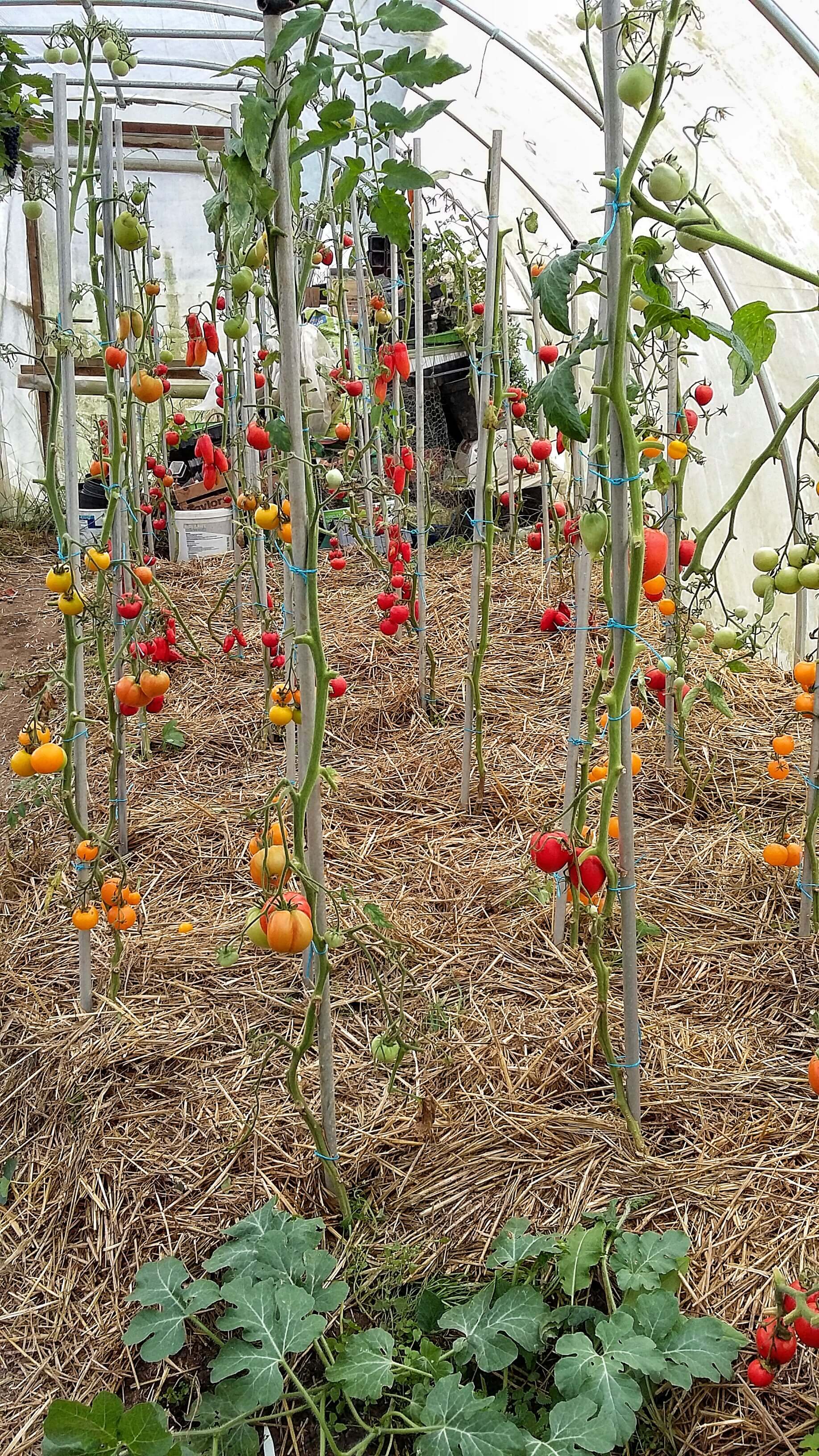
A peek inside my Mum’s polytunnel and some impressive looking tomatoes
There’s nothing nicer than taking a ripe tomato still warm from the sun and eating it.
One of my favourite recipes has to be sliced warm tomatoes, (my favourite variety this year was called ‘Country Taste’ a fleshy, sweet tasting tomato) sprinkled with feta cheese and a handful of black olives, topped with a basil, garlic and olive oil vinaigrette dressing.
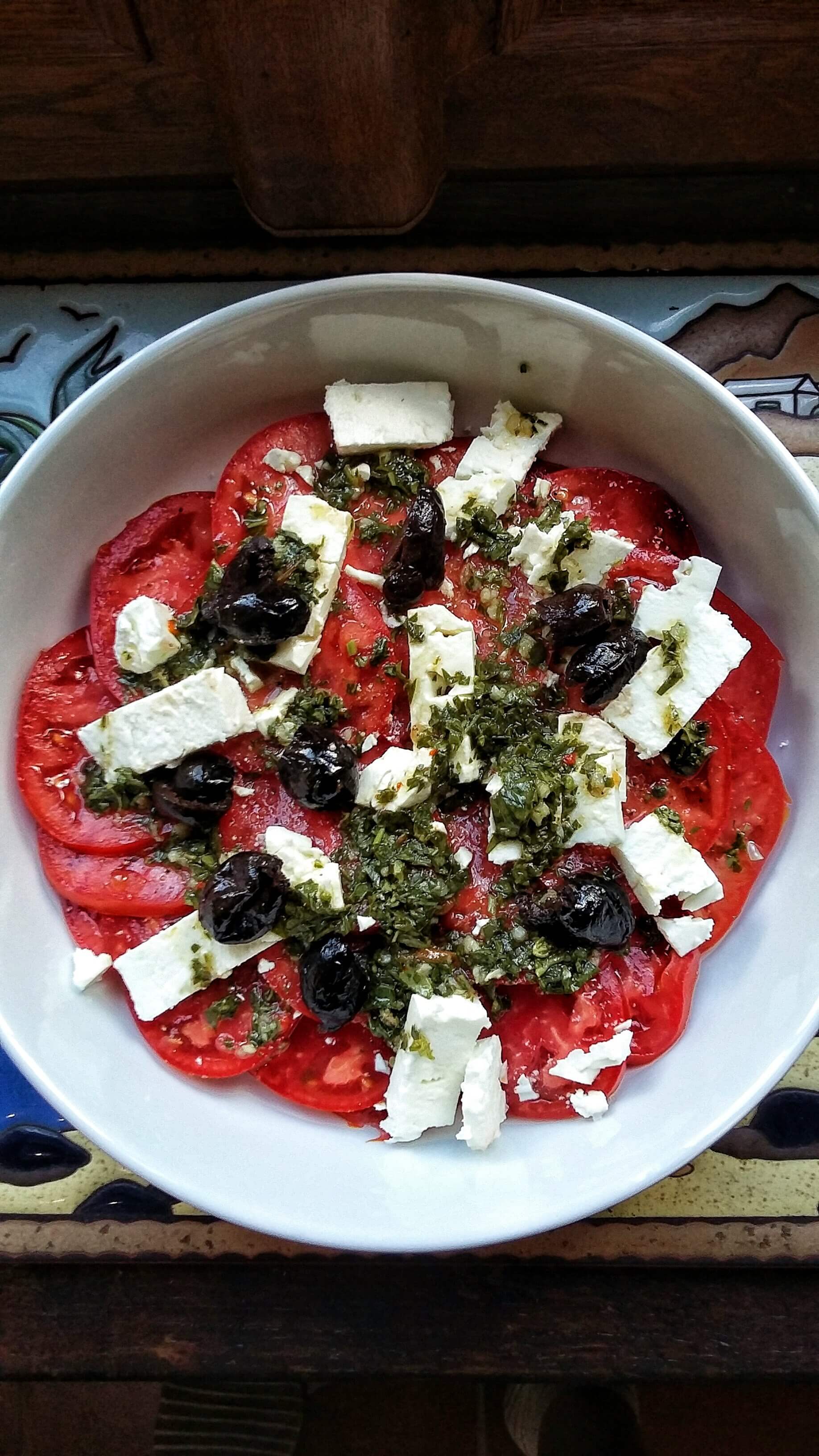
Tomato, feta and olive salad
I have a glut of tomatoes this year and don’t like to waste them, so I have bottled about 30 jars of puree.
I cut the tomatoes half or quarters depending on their size, put them in a roasting tray nothing else added, and roast them for 30 minutes at 200 degrees, strain out most of the juice in the bottom of the tray, then spoon into a tomato mill to get rid of the skin and pips, I have a cheap hand mill but you could use a sieve as well.
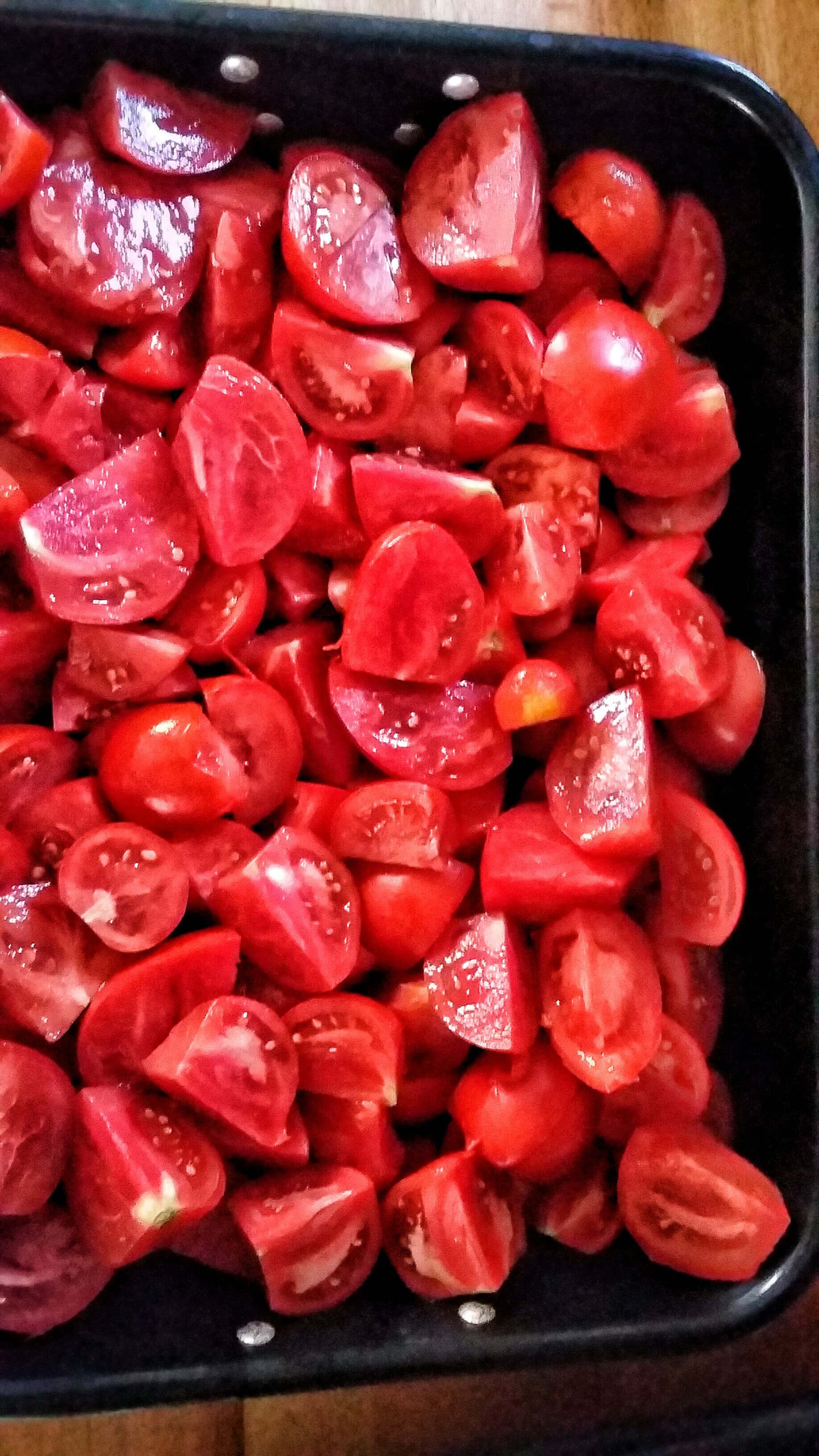
Chopped tomatoes ready for the oven
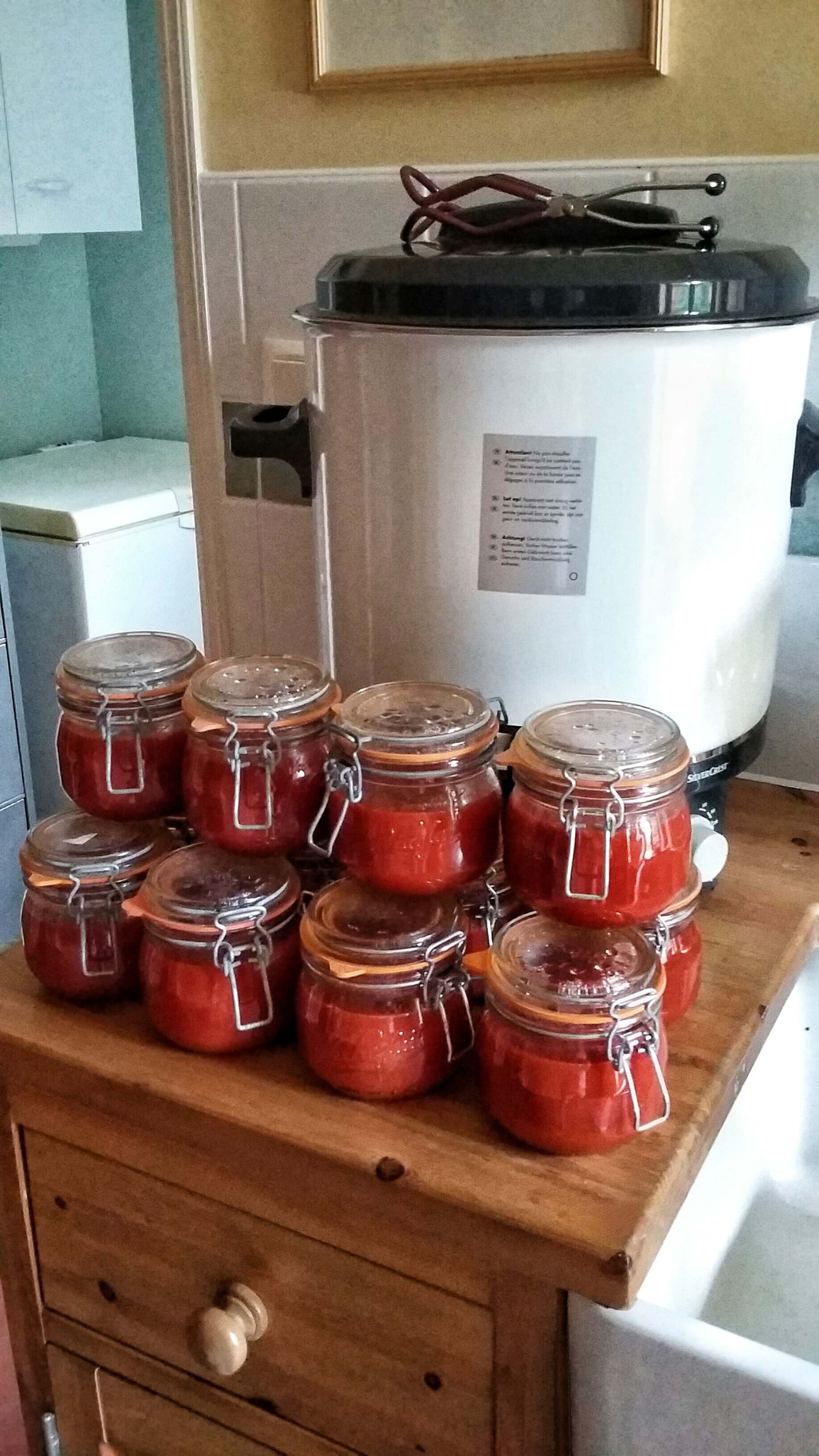
Homemade tomato puree
I add a teaspoon of brown sugar and a teaspoon of lemon juice to the preserving jars to help keep the colour, don’t use jars that are to big- think how much you are going to use for one meal.
Then sterilise the jars in a water bath at 100 degrees for 45 minutes, let them cool down before you test the seal, they should keep for at least year.
How to use excess peppers
The best way to skin peppers is to roast them at 200 degrees for 10-15 minutes until the skins are blackened. Place in a plastic bag or a bowl covered in clingfilm and let them cool for another 10-15 minutes. Peel off the skins, cut into quarters and take out the seeds, you can then open freeze on baking trays or bag up the quantity you need in individual bags and freeze.
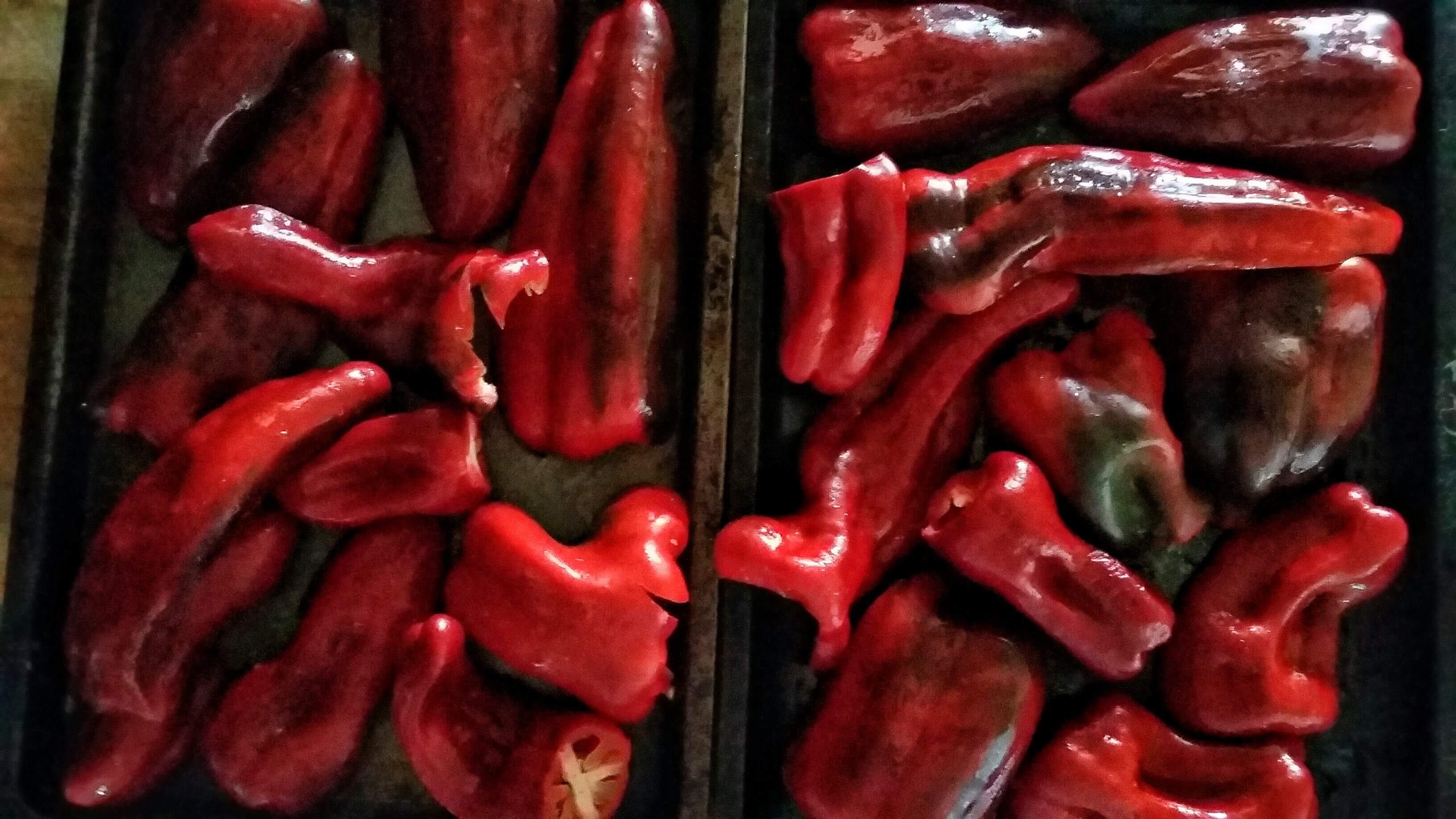
Peppers ready for roasting
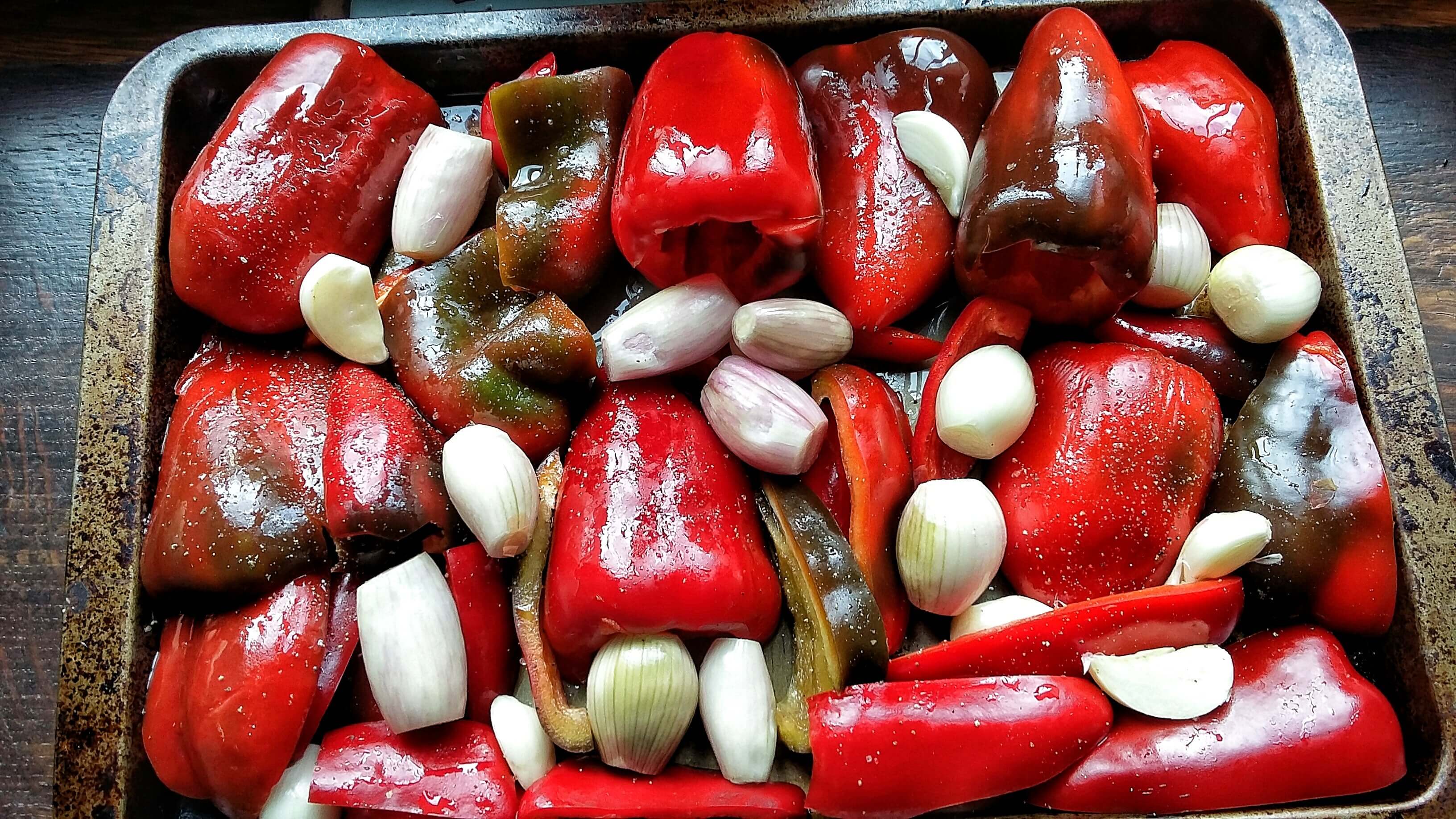
Peppers with shallots and garlic.
I’ve added a few garlic cloves and shallots to one of my batches but I think I prefer them on their own. Roasted red peppers are a lovely addition blitzed up in winter soups or pasta sauces.
Autumn veg one pot wonder
I went into the garden and picked some potatoes,sweetcorn,courgettes, beetroot, peppers, red onion, butternut squash, fennel, and tomatoes.
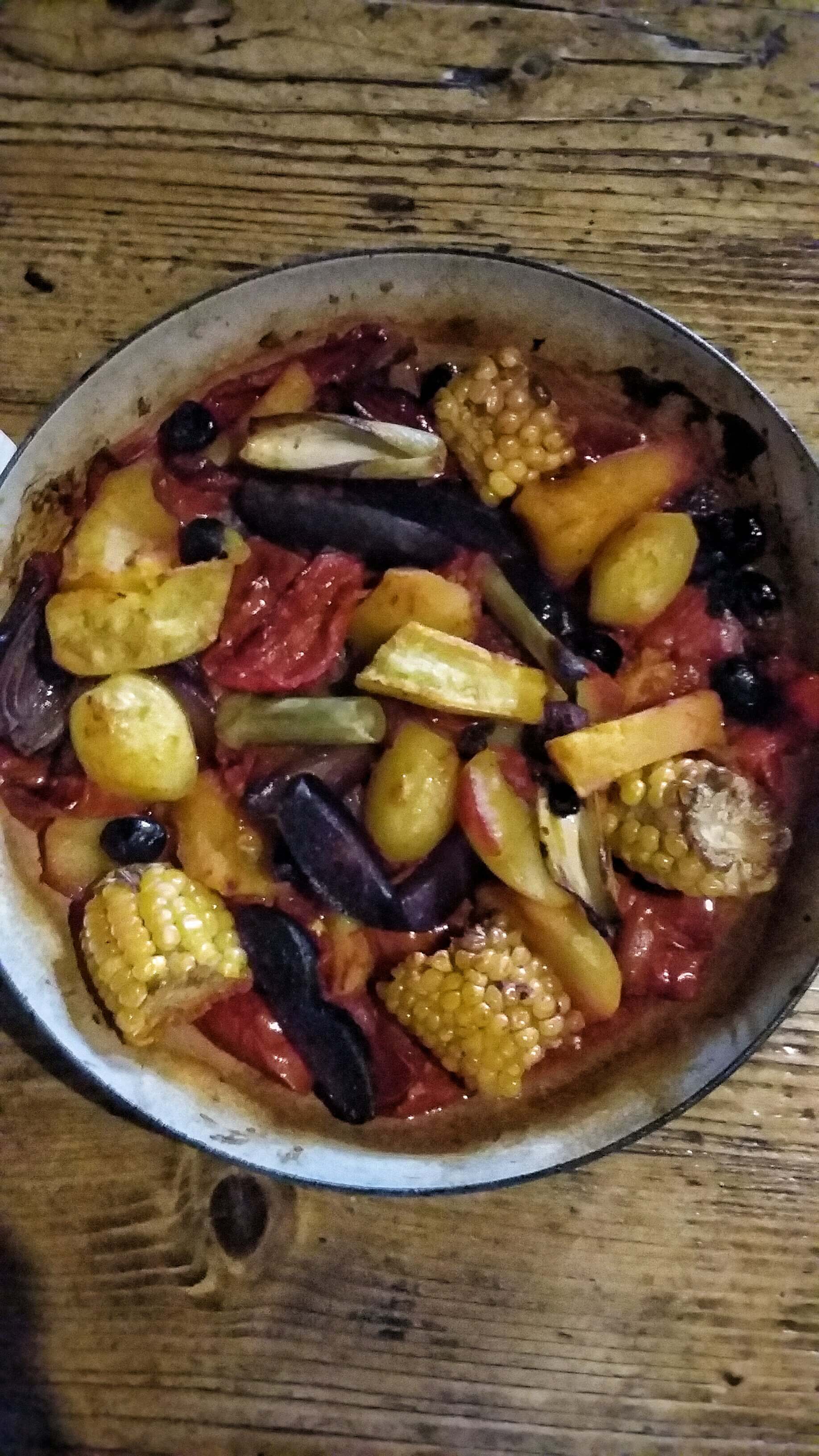
One pot wonder with chorizo and autumn vegetables
Peel and cut into equally sized pieces, par boil the potatoes and butternut squash for 5 mins, then put them all in a large roasting dish, toss in olive oil salt and pepper and cook for about 30 minutes at 190 degrees. Then take out and add halved tomatoes, a handful of olives and a couple of inches of chorizo cut in chunks and toss again. If you want to put a fish steak/ lamb/pork chop on top and cook for another 30 minutes, the tomato and chorizo make a lovely sauce in the bottom of the pan. Then serve and enjoy!
I hope you have enjoyed my little journey into the garden! Let me know what you think of these ideas, and feel free to add your own in the comments.

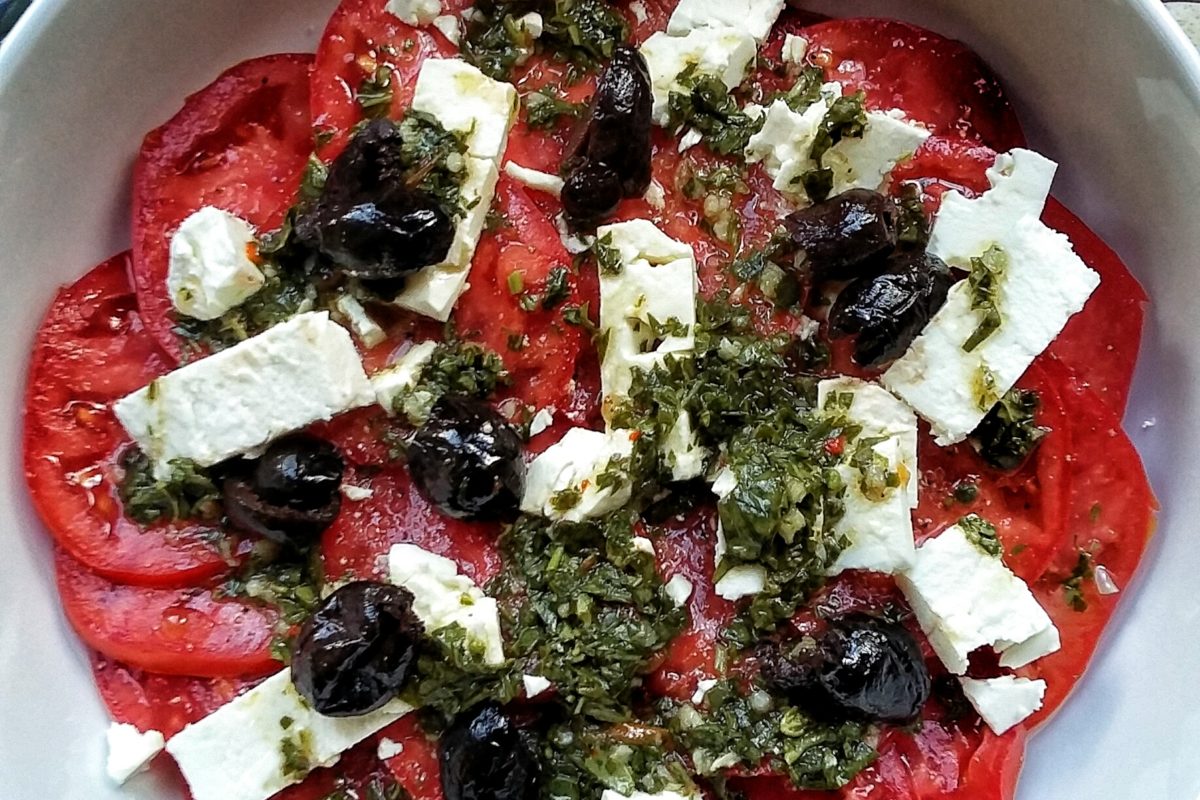






I love the look of the tomato, olive and feta salad and that autumn veg one pot wonder looks delicious too 🙂